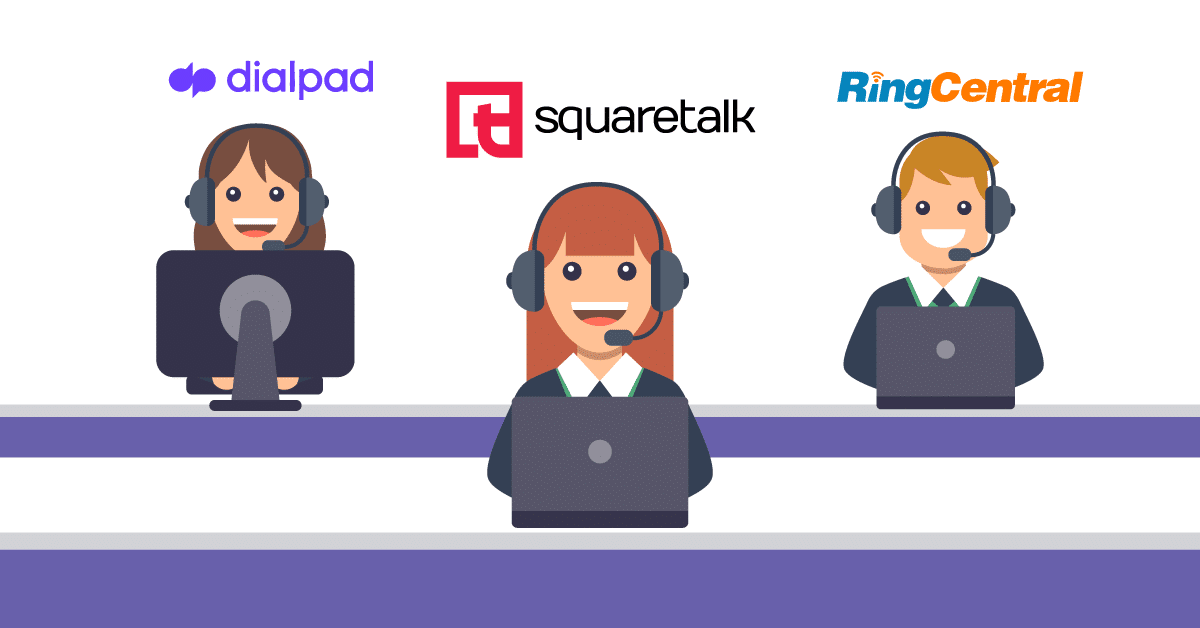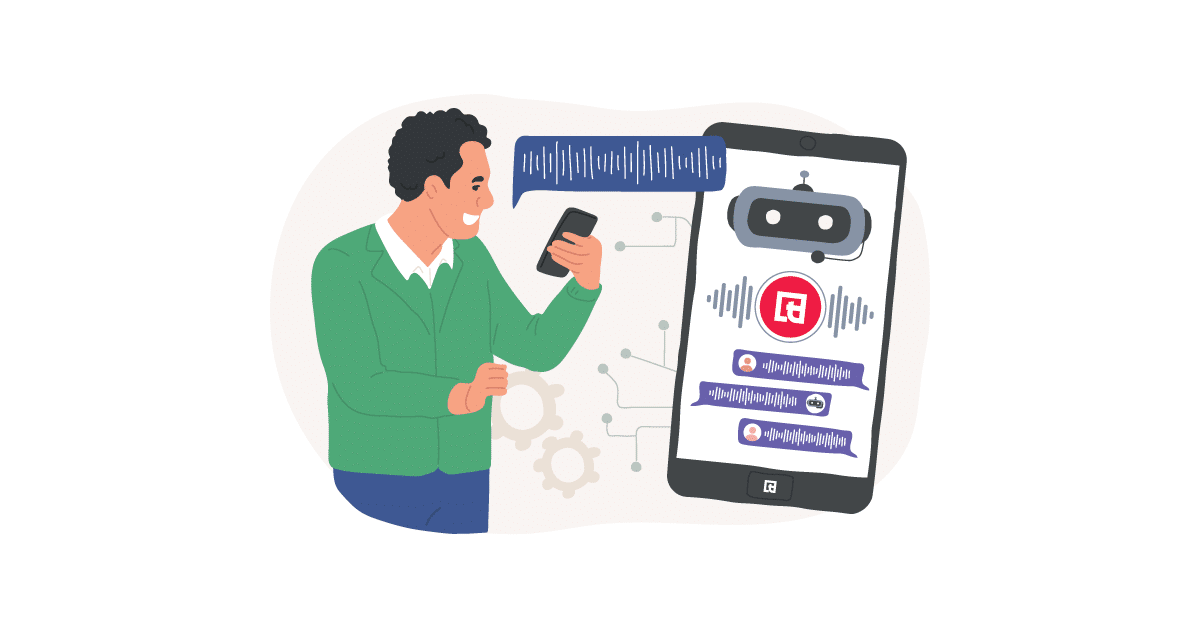CX remains essential in the corporate world. Companies provide their agents with the right information and skillsets to fulfill the needs of their customers.
Companies invest in innovative technologies in order to provide the best possible customer support. As a result, outstanding customer service is now synonymous with a better customer experience, validated by analyzing customer service research. However, if you want to give exceptional customer service, you’ll need to invest in the most dependable customer service solutions.
Understanding the present situation of the market may be gleaned from stats about the customer experience. We’ve listed the most crucial customer experience statistics for 2025 with CX experts’ insights to help you understand how they affect your business. Continue reading!
Customer Service as a Factor for Brand Loyalty
Customer service is vital to 96% of consumers when it comes to brand loyalty.
The best way to keep your customers coming back for more is by treating them as individuals, not just numbers on a spreadsheet. Tailored and contextual interactions across the customer journey are not just strategic priorities – they’re essential to building sustainable businesses in today’s competitive market.
According to Gavin Johnson, managing director at Evking, loyalty micro-moments separate CX leaders from laggards. “You know a great client experience when you see it,” he said. “On a recent vacation, I used my phone to check into my hotel room, skipping the front desk line. Isn’t it handy? But what the hotel did following my check-in will stay with me forever (including here, it turns out). The hotel sent me an email with the hours of the coffee kiosk and the fitness center. The brand knew I always used those two facilities from past trips. They knew I’d need that information once I’d settled in. It was a little gesture, but the message it sent was huge. Brands who understand how to exploit micro-moments – when consumers reach for their phones to see or do something – to build loyalty will outperform their competitors in CX. Following all, I can’t be the only one whose expectations rise after such deliberate care.”
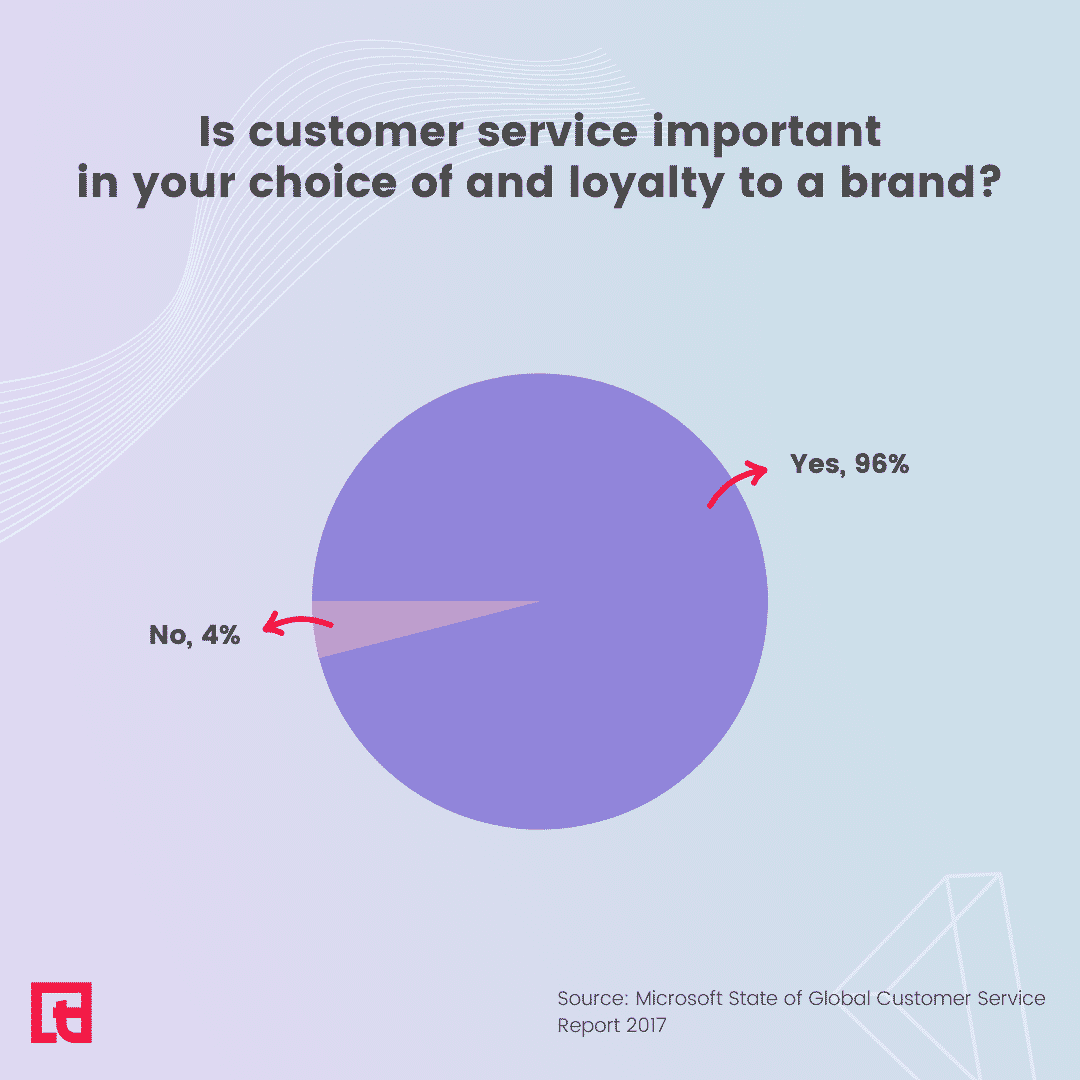
You can use strategies like asking for customer feedback, engaging on social media, and providing proactive and predictive support to boost your brand’s favorability ratings.
“Excellent customer experience begins the minute your clients come into touch with your company and continues long after they have started using and are delighted with your product. Consider how many times you’ve abandoned a website because it took too long to load. Do you recall how many times you purchased a product solely because it came with free shipping or installation? You would have effectively acquired your clients’ trust if you had made their buyer experience convenient, engaging, and adaptable enough. According to customer satisfaction statistics, this really improves the likelihood of purchasing from you again,” said Shiv Gupta, CEO of Incrementors.
“In 2023, keep in mind that if 100 people have a fantastic experience, they will share to 600 people about your brand and go further to suggest they try it out. Ensure that your interface and processing work smoothly for positive feedback,” added Stephen Curry, CEO of CocoSign.
Consequences of Poor Customer Service
According to Forbes, 58% of people will switch brands to specifically get a better customer service experience. Another study shows that 61% of customers stopped doing business with a company due to poor customer service.
Customers have no issues abandoning a firm that offers them terrible customer service. Several factors lead to poor customer experience, and one of the most important is if customers believe their issues or concerns are being neglected.
There are too many competitors out there, and your customers will be more than happy to share what went wrong and how broken their experience was and then detail all of the reasons why they’d like nothing more than to find a way to cut you out of their lives permanently.
As a result, it’s essential to evaluate your customer’s journey and assess their expectations. Numerous reasonable software solutions can help you do this and allow you to analyze and enhance your consumers’ experience with your company.
Importance of Knowledge Base
91% of customers would use an online knowledge base if it was available and personalized to their specific needs.
The use of self-service channels will continue to grow as customers increasingly prefer self-service over contacting a support representative. Companies can do this by providing self-service options for their customers – such as FAQs, knowledge base, email support, live chat, and social media channels. These options allow customers to quickly find the answers they’re looking for without having to contact a customer service representative.
Reasons for Customer Service Frustration
The primary source of customer service frustration, according to 27% of respondents, is a lack of effectiveness.
This means that customers are either not getting the right answer or their problem is not being solved. This finding is likely to be related to the fact that customers are more demanding than ever before.
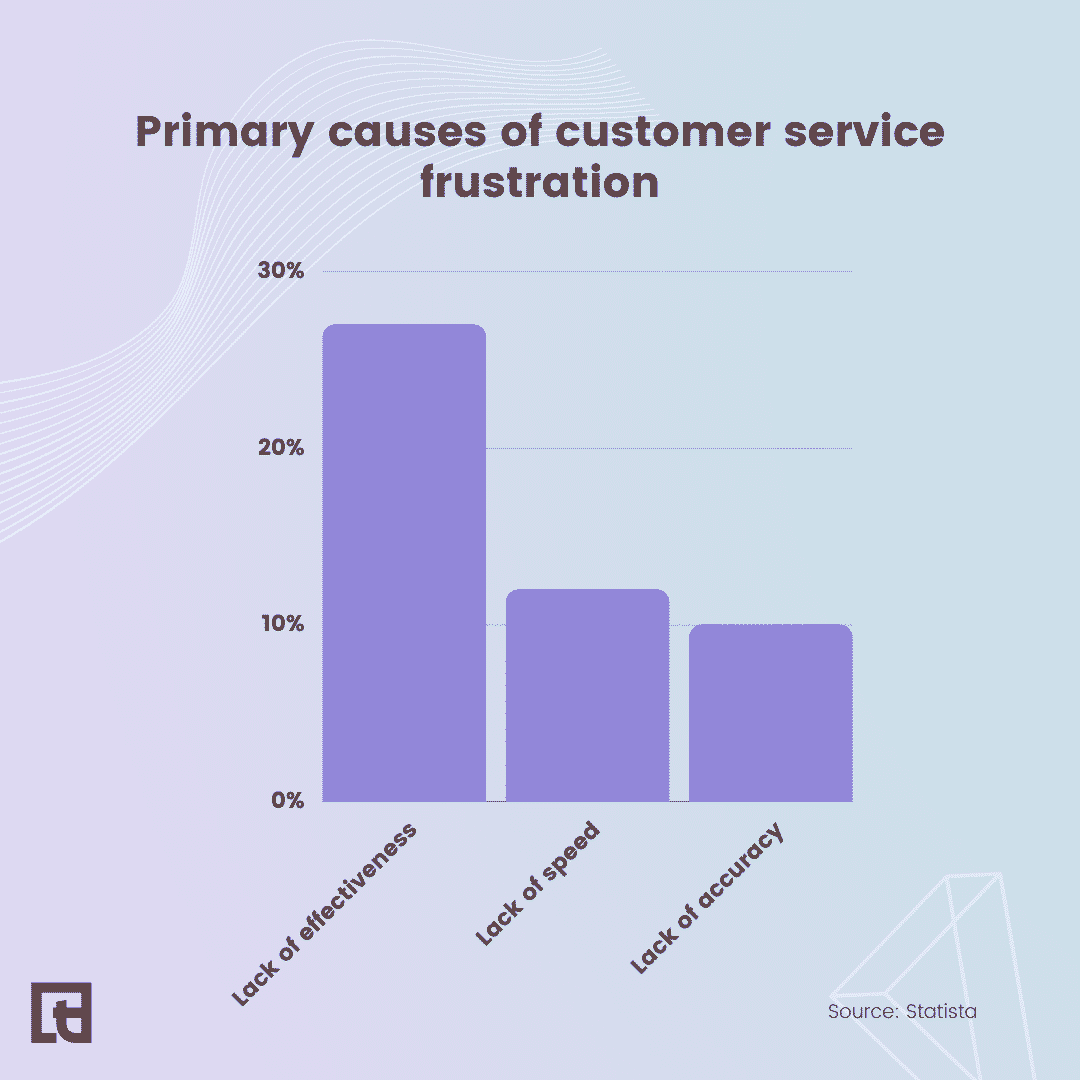
Customers are more informed about products and services, they have higher expectations for the customer experience, and they are less forgiving when things go wrong. The result is that customers can feel let down by poor service or be frustrated by a lack of response from customer service agents.
Proactive Customer Service
70% of customers have a more favorable opinion of firms that offer or contact them with proactive customer service notifications. 92% reported that preemptive assistance positively affected their opinion of the company, while 87% stated that proactive support drove them to take positive action.
With the rise of online shopping, customers are now more and more reliant on customer service to solve issues that arise. This can be a difficult task for many companies who don’t have the resources or the manpower to provide the level of customer service that is expected by their customers.
To solve this problem, some companies have turned to proactive customer service notifications. These notifications are sent out before an issue occurs so that it is easier for the company to resolve it before they lose a customer.
“I believe that focusing on CX can help organizations increase brand preference and customer retention,” said Gerrid Smith, CEO & Founder of Criminal Defense. “Brands will become more adept at predicting customer attrition and determining the “best next action” to keep them, whether through digital communications or hyper-targeted offers. Many firms currently have access to the data needed to build proactive CX programs. Now they need help turning data into insights, insights into actions, and actions towards desired outcomes.”
Sources of Brand Trust
Advertising is the least trusted source of information about brands and services among consumers.
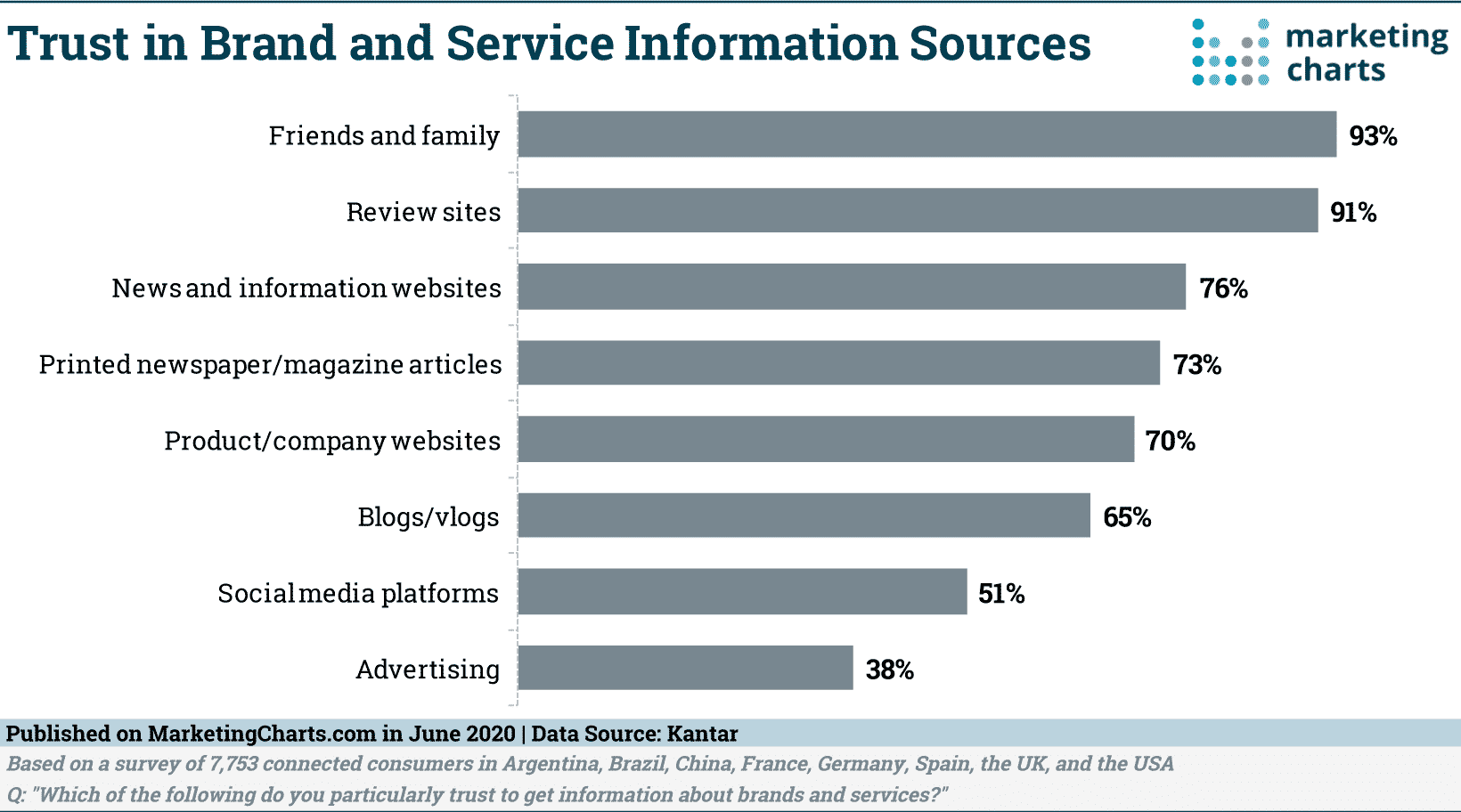
Friends and family are still the most trusted sources of brand information.
“No customer wants to pay for services that are unsatisfactory,” said Admir Salcinovic, co-founder and marketing manager at PriceListo. “Reviews from trusted parties like friends and family help customers make informed decisions about paying for a product or service. This is a form of word-of-mouth advertising that is very effective in converting visitors into customers. Bearing this in mind, we strive to provide our customers at PriceListo with the best customer experience so that customers are encouraged to share their experiences with others. When customers know what to expect from a business or service provider, they are more likely to make a purchase. This is why we prioritize excellent customer satisfaction at our company.”
Mobile-Responsive Customer Service
Brands that provide a mobile-responsive customer service portal are seen more favorably by 79% of millennial respondents.
The number of people using mobile devices is on the rise (mobile devices currently account for 54.7% of all Internet traffic), and this trend is projected to continue, encouraging organizations to make sure their websites are mobile-friendly (and yet, 28% of small businesses still don’t have a website!).
85% of adult mobile users want a company’s website to operate as well or better than on a desktop.
About 57% of consumers say they won’t suggest a company with a website that isn’t mobile-friendly.
84% of customer-focused businesses prioritize the mobile customer experience.
Importance of Quick Customer Support
Customers are 2.4x more likely to keep doing business with a brand if they receive prompt or quick support with their problems.
Per David Wurst, founder of WebCitz, this is because customers want their issues to be resolved as soon as possible so that they can continue with their day-to-day lives.
“Quick customer support is important because it can help resolve any issues that customers may have with your product or service,” he said. “It can also help to build customer loyalty by providing a positive experience that exceeds their expectations. Quick customer support can also help to prevent future problems by addressing them quickly and effectively.”
Speed, Convenience and Empathy
Consumers place a high value on speed, convenience, helpful staff, and friendly service, each receiving over 70% of the vote.
- Speed: The majority of people want their products quickly and conveniently delivered to them with as little hassle as possible.
- Convenience: The most important aspect for customers is the convenience that comes with the product or service they are purchasing.
- Helpful staff: People want to be able to reach out to someone if they have any questions about what they are buying or need help choosing a product.
- Friendly service: Customers want a sense of connection when interacting with a company and appreciate how friendly and helpful its representatives are.
Those businesses that get it right rely more heavily on technologies that foster or give these benefits over leveraging technology just to be on the cutting edge.
“Empathy is at the heart of customer experience,” said Steven Walker, CEO of Spylix. “You must not only maintain open and simple contact with your consumers, but you must also comprehend them. You don’t have to agree with everything the consumer says, but you should put yourself in their position. Also, try to understand where they’re coming from and what they’re going through.”
“60% of customers believe companies do not care about them or their business. In order to combat this sentiment, CX practitioners will invest in training employees on how to be more empathetic,” added Roger Huang, head of growth operations at Springboard.
Personalization
Customers spend 140% more with companies with great experience than those who had unsatisfactory ones.
Creating a great customer experience is not just about providing excellent products and services. It also involves the way in which they are delivered. A customer’s experience with a company can be one of the most important factors in determining whether they will return to that company again or not.
It’s important to note that 49% of shoppers will make impulsive purchases after receiving a more personalized customer suggestion, 46% will buy more when given personalized experience and 44% will become repeat customers.
Notably, 50% of customers are willing to share personal information so they can receive a more personalized experience.
“You can personalize recommendations efficiently and effectively if you analyze the past purchases of the customers and buyers very carefully,” said Christopher Liew is the Founder of Wealthawesome.com. “Doing so allows you to learn about the customers’ spending patterns consequently. On top of that, make sure that you use the first names of the customers regularly when sending an e-mail marketing copy. You can also greet your customers and buyer during their birthdays and anniversaries regularly and offer them deals consequently. Aside from that, you can provide an exclusive discount for bulk purchases on specific items that are being ordered by the customers regularly.”
This emphasizes the need to monitor and leverage your customer data with the help of competent CRM tools, email sequence software and other omnichannel communication platforms.
Incentives such as customer loyalty programs have also been shown to be beneficial in this regard.
Relationship Between Customer Service and Spending
86% of consumers are willing to spend up to 25% extra for better customer service.
This alarming number is thought-provoking since it directly affects businesses’ bottom lines. According to Zendesk’s recent study, it’s also interesting to remember that around 80% of customers transfer to a competitor following a bad customer experience.
50% of consumers only gave a brand a week to address their concerns before walking away.
Even more surprising is the fact that 79% of customers who complained about bad customer experience online were ignored!
“Customer feedback is the most crucial stat worth keeping in mind when considering your CX strategy,” said Craig Boyle, co-founder and sales and marketing director at MSP Blueshift. “Customers want to be heard, and they don’t like it if you ask for their opinion but never act on their complaints.”
Providing Good CX as a Competition
67% of businesses now compete based on customer experience.
In 2018, Gartner’s Customer Experience Survey polled global CX executives on their perspectives on CX and its significance. According to the findings of this poll, more than 67% of firms now compete on the basis of customer experience rather than the costs of their services or goods. As compared to 2010, this represents an increase of 36%!
“More organizations recognize the critical nature of the customer experience,” said Veronica Miller, marketing director at VPNoverview. “This has resulted in increased spending on technology like big data, artificial intelligence, and data analytics that provide meaningful customer insights. These insights can be used to enhance the client experience in general. In 2018, customer-related technology spending was $471 billion. By the end of 2019, the sum had risen to $508 billion. The percentage is expected to become much higher, as there are still many organizations that have not yet jumped on the customer experience bandwagon.”
Customer Support on X [Formally Twitter]
64% of Twitter users would prefer to contact a dedicated help handle than phone a company.
This number will only grow as the internet generation ages and becomes more engaged customers. Moreover, customers who had a Twitter customer care encounter were also considerably more inclined to pay extra for a firm’s services and to choose that company over a competitor. This trend should encourage businesses owners to use the “meet-customers-where-they-are” approach.
Dissonance in Perception
80% of companies believe they deliver outstanding customer service, however…
Just 8% of individuals agree with this statement when polled. The “delivery gap”, as defined by Bain & Company, is the difference between how customer assistance is delivered and how customers actually experience it. That’s why receiving and responding to client feedback is so important.
“For many corporate owners, customer centricity means letting customers do what they want, when they want,” said Adam Wood, co-founder of RevenueGeeks. “That’s been fundamental to giving great experiences. Businesses are increasingly defining customer centricity to encompass data and trust. Consumers want more control over their data. While data privacy laws have pushed firms to be more transparent with consumer data, many are also responding to client demand. Businesses will give more data preference management and control in 2023 to establish more trustworthy brands. That is, they will handle data in a similar manner to how they construct tailored experiences with it.”
Moreover, low-effort customer interaction costs a business 37% less than a high-effort interaction. That means that companies can reduce their business operational costs by decreasing repeat customer service calls, problem escalations, and communication channel switching.
Customer Service Calls
42% of U.S. customers say that they prefer phone calls to handle customer service problems.
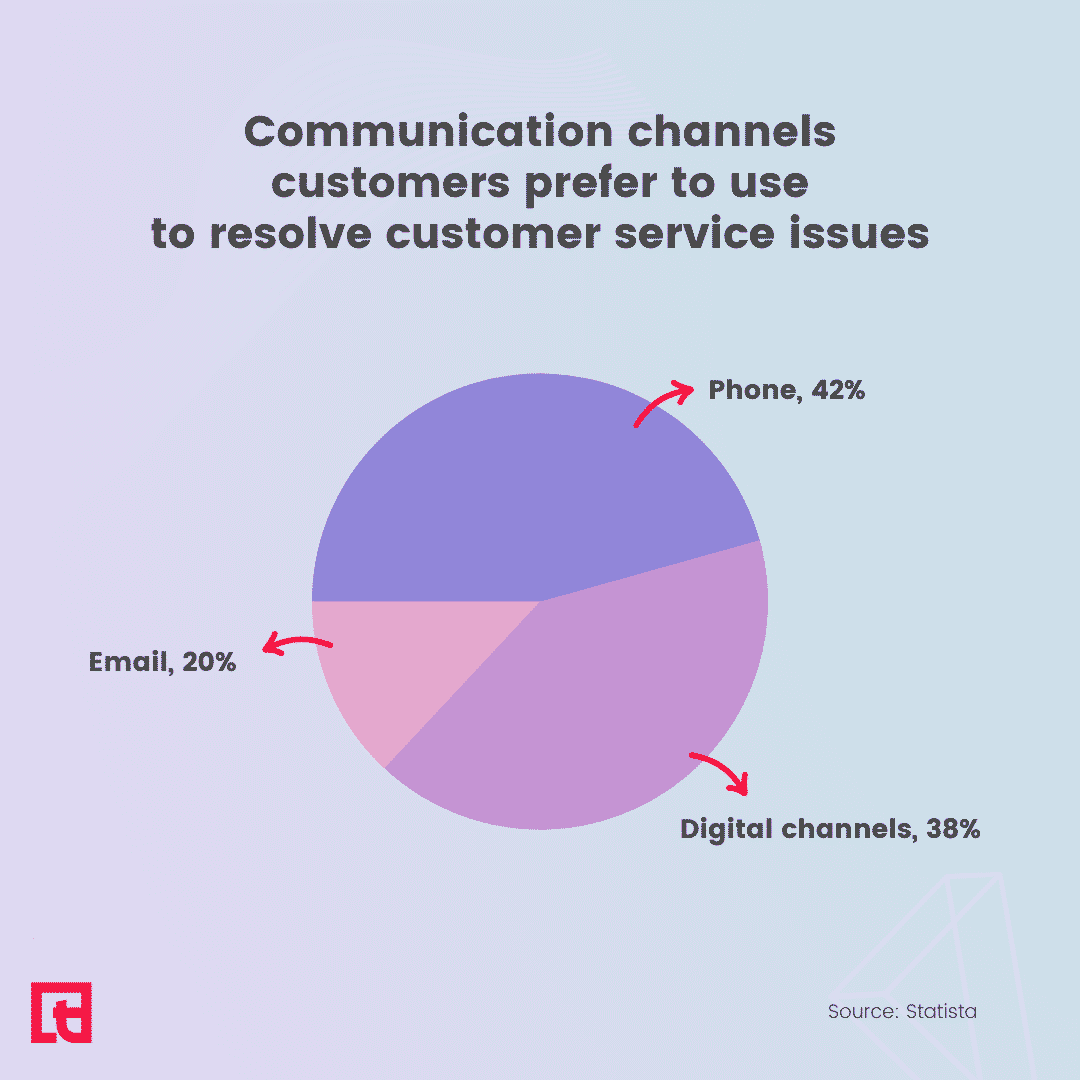
The most aggravating aspect of poor CX, according to 30% of consumers, is not being able to speak with a live person.
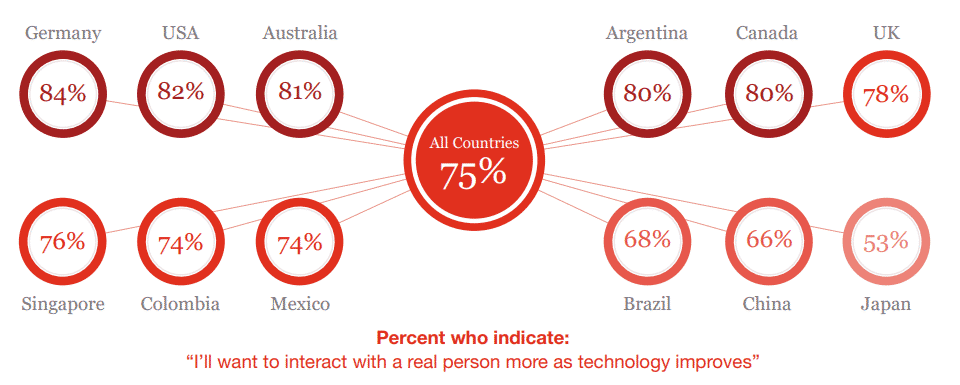
Conclusion
The customer experience has become a strategic priority for companies because it can be used to differentiate themselves from their competitors, increase loyalty and drive revenue.
“As a business, you always have to keep in mind that strategic trends change in short time intervals,” said Alex Bryce, co-founder at WeInvoice. “You cannot or should not always keep up with the trends. But you should know what works for you and what keeps your customers happily returning to you. Seamless digital experience is an aspect that is inclining the customers. In 2023, we plan on keeping an excellent digital presence that gives a unified experience to the customer.”
If you want to enhance the client experience, there are a variety of platforms that can help with this. However, regardless of the communication medium used, the ultimate aim is not only to turn them into regular paying customers. The goal of the customer experience is to create a memorable and positive experience for your customers. That starts with an easy and seamless onboarding process, continues with personalized interactions across the customer journey, and ends with loyalty that lasts long after the purchase.





